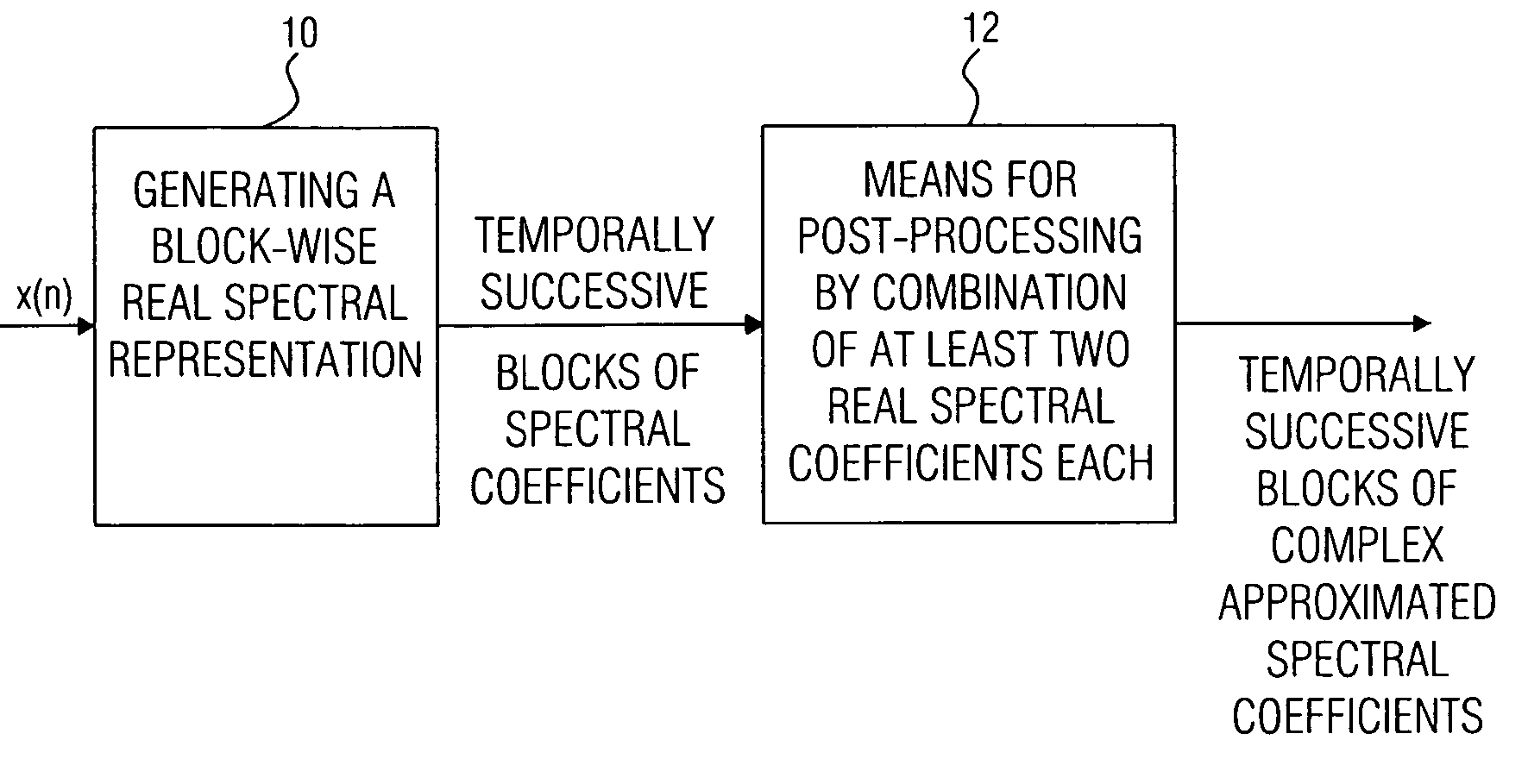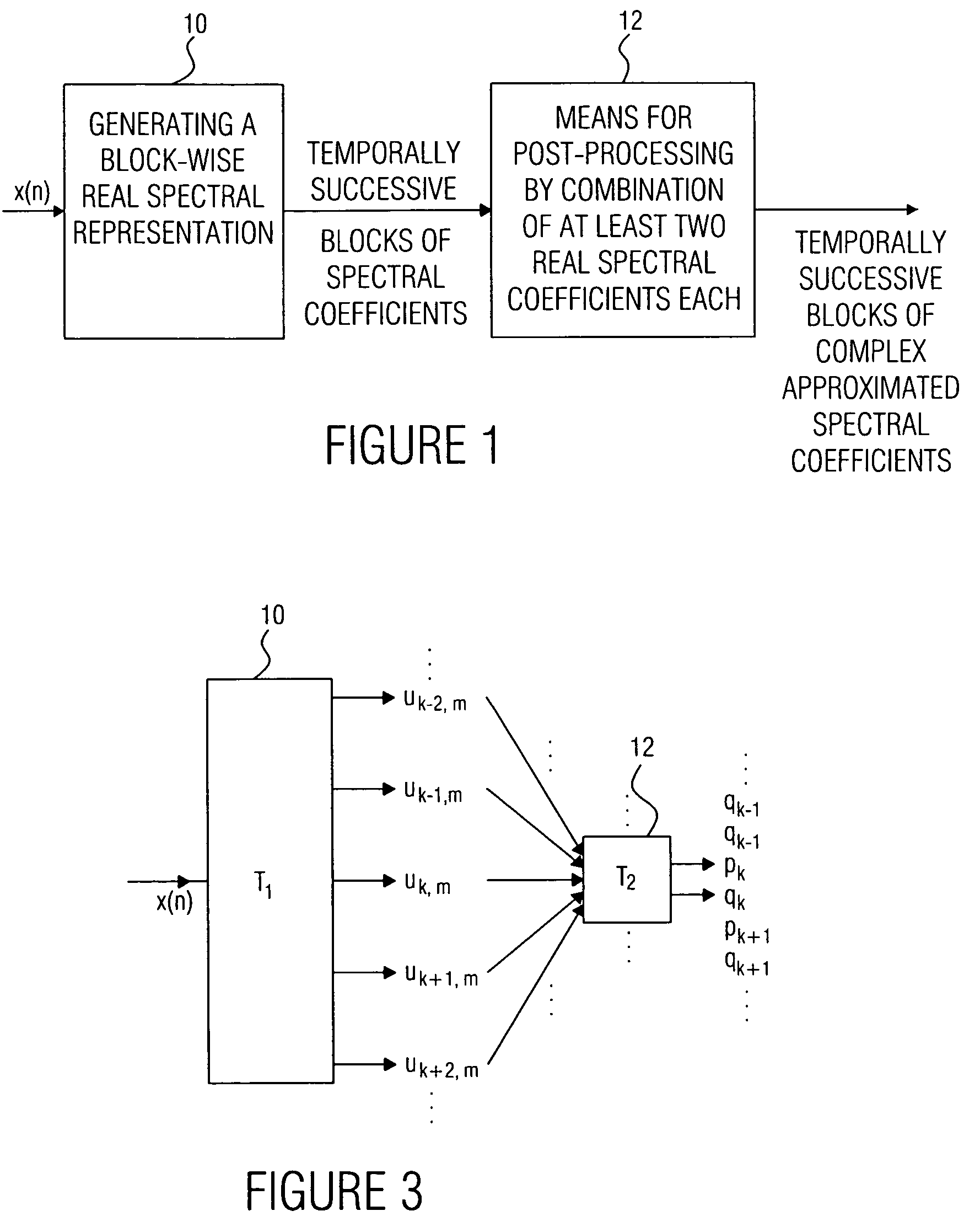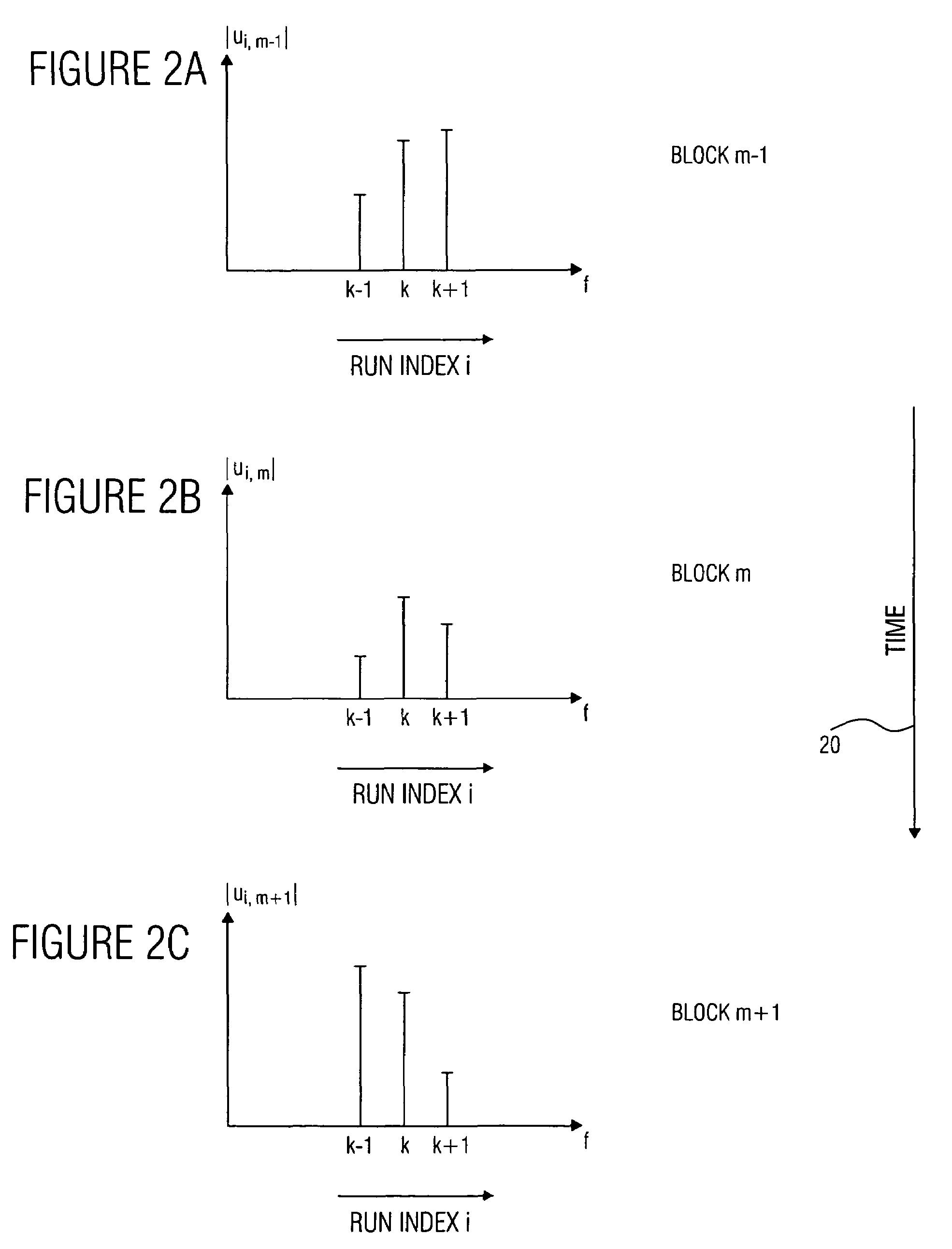Device and method for generating a complex spectral representation of a discrete-time signal
a discrete-time signal and complex technology, applied in the field of timefrequency conversion algorithms, can solve the problems of severe limitation of the achievable spectral splitting quality, undesired data compression methods, and the approach is subject to some limitations
- Summary
- Abstract
- Description
- Claims
- Application Information
AI Technical Summary
Benefits of technology
Problems solved by technology
Method used
Image
Examples
Embodiment Construction
[0041]FIG. 1 shows a device for generating a complex spectral representation of a discrete-time signal x(n). The discrete-time signal x(n) is fed to means 10 for generating a block-wise real-valued spectral representation of the discrete-time signal, the spectral representation comprising temporally successive blocks, each block comprising a set of spectral coefficients, as will be discussed in greater detail referring to FIGS. 2a and 2b. At the output of means 10, there is a sequence of temporally successive blocks of spectral coefficients which, due to the characteristic of means 10, are real-valued spectral coefficients. This sequence of temporally successive blocks of spectral coefficients is fed to means 12 for post-processing to obtain a block-wise complex approximated spectral representation comprising successive blocks, each block comprising a set of complex approximated spectral coefficients, wherein a complex approximated spectral coefficient can be represented by a first ...
PUM
 Login to View More
Login to View More Abstract
Description
Claims
Application Information
 Login to View More
Login to View More - R&D
- Intellectual Property
- Life Sciences
- Materials
- Tech Scout
- Unparalleled Data Quality
- Higher Quality Content
- 60% Fewer Hallucinations
Browse by: Latest US Patents, China's latest patents, Technical Efficacy Thesaurus, Application Domain, Technology Topic, Popular Technical Reports.
© 2025 PatSnap. All rights reserved.Legal|Privacy policy|Modern Slavery Act Transparency Statement|Sitemap|About US| Contact US: help@patsnap.com



